
Port-au-Prince: The Heartbeat of Haiti
Discover the vibrant culture, rich history, and natural beauty of Port-au-Prince, Haiti's bustling capital nestled between the Caribbean Sea and lush mountains.
Port-au-Prince, Haiti's vibrant capital, is a city where history, culture, and resilience converge. Nestled between the Caribbean Sea and lush mountains, this bustling metropolis offers a unique blend of old-world charm and modern vibrancy. Visitors can explore its colorful markets, historic sites, and lively neighborhoods, all while soaking in the rich cultural heritage that defines this city. Start your journey at the Iron Market (Marché en Fer), a bustling bazaar where you can find everything from local crafts to fresh produce. This iconic market is not just a shopping destination but a cultural experience that offers a glimpse into the daily lives of the locals. Don't miss the chance to visit the National Palace, a symbol of Haitian history and resilience, and take a stroll through the nearby Champs de Mars, a popular gathering spot for both locals and tourists. For a deeper understanding of Haiti's artistic soul, visit the Musée du Panthéon National Haïtien (MUPANAH), which showcases the country's rich history and culture through a collection of artifacts, artworks, and exhibits. Art lovers should also explore the vibrant street art scene in neighborhoods like Pétion-Ville, where murals and galleries celebrate the creativity and spirit of Haiti's artists. Nature enthusiasts will find solace in the nearby mountains and beaches. A short drive from the city, you'll find the serene beaches of Côte des Arcadins, perfect for relaxation and water activities. The nearby mountains offer hiking opportunities with stunning views of the city and the sea, providing a peaceful escape from the urban hustle. Port-au-Prince is not just a destination; it's an experience that will leave you with lasting memories of Haiti's vibrant culture, history, and natural beauty.
Local tips in Port-au-Prince
- Visit the Iron Market early in the morning to avoid the crowds and get the best selection of goods.
- Carry small denominations of the local currency (Haitian Gourde) for easier transactions at markets and local shops.
- Hire a local guide for a more insightful tour of historic sites and to navigate the city's neighborhoods.
- Stay hydrated and use sunscreen when exploring outdoor attractions, as the tropical climate can be quite intense.
- Sample local Haitian cuisine, such as griot (fried pork) and akra (malanga fritters), at local eateries for an authentic culinary experience.
Neighbourhoods in Port-au-Prince
Port-au-Prince: The Heartbeat of Haiti
Port-au-Prince, Haiti's vibrant capital, is a city where history, culture, and resilience converge. Nestled between the Caribbean Sea and lush mountains, this bustling metropolis offers a unique blend of old-world charm and modern vibrancy. Visitors can explore its colorful markets, historic sites, and lively neighborhoods, all while soaking in the rich cultural heritage that defines this city. Start your journey at the Iron Market (Marché en Fer), a bustling bazaar where you can find everything from local crafts to fresh produce. This iconic market is not just a shopping destination but a cultural experience that offers a glimpse into the daily lives of the locals. Don't miss the chance to visit the National Palace, a symbol of Haitian history and resilience, and take a stroll through the nearby Champs de Mars, a popular gathering spot for both locals and tourists. For a deeper understanding of Haiti's artistic soul, visit the Musée du Panthéon National Haïtien (MUPANAH), which showcases the country's rich history and culture through a collection of artifacts, artworks, and exhibits. Art lovers should also explore the vibrant street art scene in neighborhoods like Pétion-Ville, where murals and galleries celebrate the creativity and spirit of Haiti's artists. Nature enthusiasts will find solace in the nearby mountains and beaches. A short drive from the city, you'll find the serene beaches of Côte des Arcadins, perfect for relaxation and water activities. The nearby mountains offer hiking opportunities with stunning views of the city and the sea, providing a peaceful escape from the urban hustle. Port-au-Prince is not just a destination; it's an experience that will leave you with lasting memories of Haiti's vibrant culture, history, and natural beauty.
When is the best time to go to Port-au-Prince?
Iconic landmarks you can’t miss
Champ de Mars
Discover the lush beauty and rich heritage of Champ de Mars, a tranquil park in the heart of Port-au-Prince, perfect for relaxation and cultural immersion.
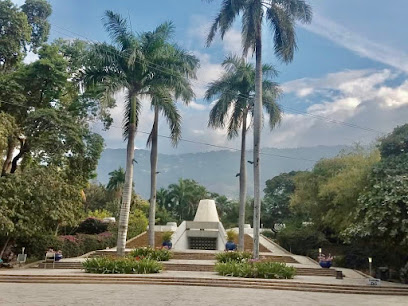
Portofino
Experience authentic Italian cuisine in the vibrant Petion Ville district of Port-au-Prince, Haiti, at Portofino Ristorante Italiano.

Place Saint-Pierre
Explore the lush greenery and vibrant atmosphere of Place Saint-Pierre, a peaceful park in the heart of Port-au-Prince, perfect for relaxation and local culture.

L'Observatoire de Boutillier
Experience the vibrant flavors of Haiti at L'Observatoire de Boutillier, where culinary delight meets breathtaking views in Port-au-Prince.

The National Pantheon Museum
Explore the rich tapestry of Haitian history at The National Pantheon Museum, where culture, heritage, and stories of resilience come to life.

Coin des Artistes - Vivano
Discover the culinary artistry of Coin des Artistes - Vivano in Pétion-Ville, where traditional Haitian flavors meet modern dining elegance.

Palais Des Friandises
Discover the vibrant flavors of Haitian cuisine at Palais Des Friandises in Port-au-Prince, a culinary gem offering a unique dining experience.

FOKAL Fondasyon Konesans ak Libète
Explore the vibrant cultural hub of FOKAL in Port-au-Prince, where creativity and knowledge come together to celebrate Haitian heritage.

Fort Jacques et Fort Alexandre
Discover the historical treasures and stunning views at Fort Jacques et Fort Alexandre, a remarkable fortress experience in the heart of Haiti.

Tabarre's Palace
Experience the vibrant culture and warmth of Haiti at Tabarre's Palace, your perfect base for exploring Port-au-Prince.

Habitation Hatt Hôtel
Immerse yourself in Haitian culture at Habitation Hatt Hôtel, where comfort meets authentic culinary experiences in the heart of Port-au-Prince.

National Palace
Explore the National Palace in Port-au-Prince, a historic monument symbolizing Haiti's resilience and rich cultural heritage.

Parish of Our Lady of Perpetual Help
Discover the serene beauty and cultural richness of the Parish of Our Lady of Perpetual Help in Port-au-Prince, a spiritual landmark steeped in history.

Circuit 9 Haiti
Discover the exhilarating world of car racing at Circuit 9 Haiti, where speed meets excitement in the vibrant heart of Port-au-Prince.

Station Gonaives
Discover Port-au-Prince with ease at Station Gonaives, your reliable car-sharing location for exploring Haiti's vibrant capital.

Unmissable attractions to see
Champ de Mars
Explore Champ de Mars in Port-au-Prince, a vibrant park filled with history, culture, and beautiful landscapes that embody the spirit of Haiti.

The National Pantheon Museum
Explore the rich heritage of Haiti at The National Pantheon Museum in Port-au-Prince, where history and culture come alive.

Fort Jacques et Fort Alexandre
Discover the rich history and stunning views at Fort Jacques et Fort Alexandre, Haiti's majestic fortresses overlooking Port-au-Prince.

Bassin Bleu
Explore the breathtaking turquoise pools and waterfalls of Bassin Bleu in Jacmel, a serene paradise for nature lovers and adventure seekers in Haiti.

Cathedral of Our Lady of the Assumption in Port-au-Prince
Explore the Cathedral of Our Lady of the Assumption, a stunning symbol of resilience and faith in the heart of Port-au-Prince, Haiti.

Square Of The Unknown Marron
Explore the Square of the Unknown Marron in Port-au-Prince, a historical landmark celebrating Haiti's rich heritage and the spirit of freedom.

Pont Rouge
Explore the enchanting historical site of Pont Rouge in Port-au-Prince, where rich culture and vibrant local life converge.

LakayFunWorld
Explore the excitement of LakayFunWorld, a premier theme park in Port-au-Prince, where vibrant rides and Haitian culture unite for unforgettable family fun.

Haïti
Uncover the rich history and vibrant culture of Haiti at the Haïti Museum in Port-au-Prince, a must-visit for every traveler.

Eagle Tours & Adventure
Discover the beauty and adventure of Haiti with Eagle Tours & Adventure, your gateway to unforgettable experiences in Port-au-Prince.

Essential places to dine
Kokoye Bar & Grill
Experience authentic Haitian flavors at Kokoye Bar & Grill in Port-au-Prince - where every meal tells a story.
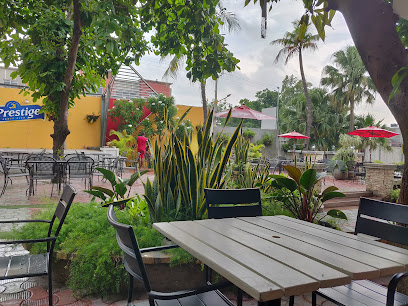
Portofino
Savor authentic Italian flavors at Portofino - a culinary gem nestled in the heart of Petion Ville, Haiti.

Magdoos Restaurant
Experience authentic Lebanese cuisine in Petion-Ville at Magdoos Restaurant - where every dish tells a story.

House of Beer Haiti
Experience vibrant nightlife at House of Beer Haiti with delicious food, refreshing drinks & live entertainment in Port-au-Prince.
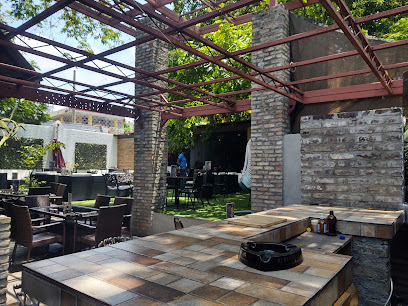
Fior Di Latte
Experience the rich flavors of Haiti at Fior Di Latte, Petion-Ville's premier dining destination offering authentic cuisine in a charming setting.

La Fouchèt
Discover authentic Haitian flavors at La Fouchèt in Port-au-Prince - where vibrant culture meets delicious cuisine.

VOL Cafe-Bistro
Experience authentic Haitian cuisine at VOL Cafe-Bistro in Port-au-Prince - where every dish tells a story.
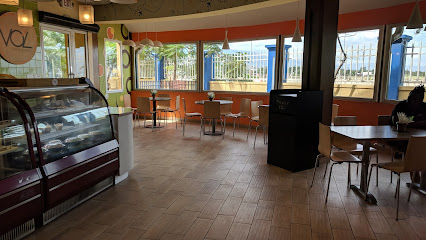
Olé Restaurant
Experience authentic Haitian cuisine at Olé Restaurant in Port-au-Prince – where every dish tells a story.

Iguana Bar Restaurant
Experience the vibrant flavors of Haiti at Iguana Bar Restaurant, where every meal tells a story.

Mozaïk
Discover the vibrant flavors of Haiti at Mozaïk, where traditional cuisine meets contemporary flair in an inviting setting.

Le Pont
Discover authentic Haitian flavors at Le Pont - a vibrant restaurant in Port-au-Prince offering delicious dishes in a warm atmosphere.
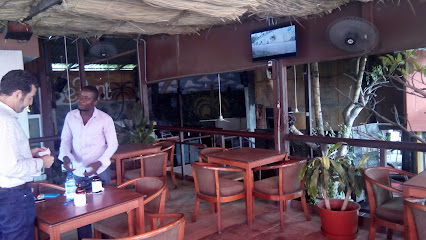
Le Sillage Restaurant
Discover authentic Haitian flavors at Le Sillage Restaurant in Port-au-Prince, where every meal tells a story.
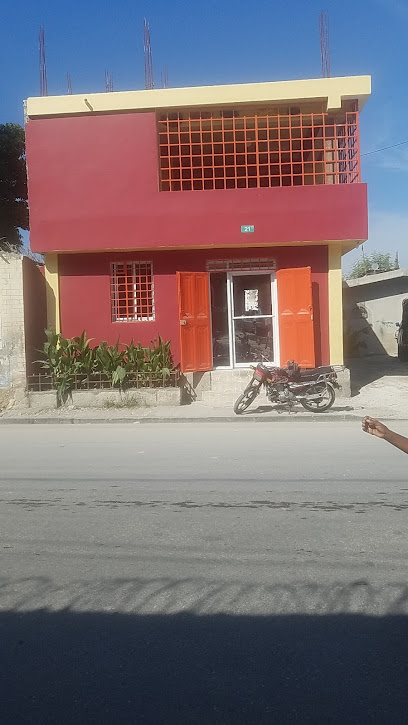
Siwèl Restaurant
Experience authentic Haitian cuisine at Siwèl Restaurant in Port-au-Prince - where flavor meets culture.

Goût Créole Restaurant
Discover authentic Haitian cuisine at Goût Créole Restaurant in Port-au-Prince, where every dish is a celebration of local flavors.

La Reserve
Discover authentic Haitian flavors at La Reserve in Port-au-Prince - where every meal is a celebration of local cuisine.

Markets, malls and hidden boutiques
Caribbean Supermarket
Explore Caribbean Supermarket in Petion-Ville for a vibrant taste of Haiti's culinary heritage and unique local products.
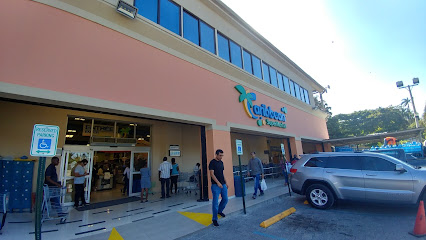
Pâtisserie Marie Beliard
Experience the authentic flavors of Haiti at Pâtisserie Marie Beliard, where every pastry is a delicious journey into local culinary traditions.

Champ de Mars
Discover the serene beauty and cultural richness of Champ de Mars, the heart of Port-au-Prince's vibrant park life.
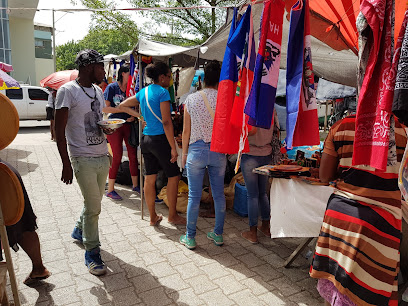
DELIMART (DELMAS 32)
Explore Delimart in Delmas 32 for a unique shopping experience that combines local flavors and international brands in the heart of Port-au-Prince.

Delmas 2000
Explore Delmas 2000 in Port-au-Prince for a unique shopping experience blending local culture with international flair.

GIANT SUPERMARKET
Explore the diverse offerings of Giant Supermarket in Petion-Ville, where local flavors and international products meet convenience and quality.

Mikado Haiti
Explore Mikado Haiti, a vibrant department store in Port-au-Prince offering a wide variety of local products and a unique shopping experience.

Eko Depot
Explore Eko Depot, Port-au-Prince's vibrant hardware store, offering everything from tools to unique local crafts for your DIY needs.

Maison Handal
Discover the vibrant shopping and cultural experience at Maison Handal in Port-au-Prince, a must-visit destination for tourists.
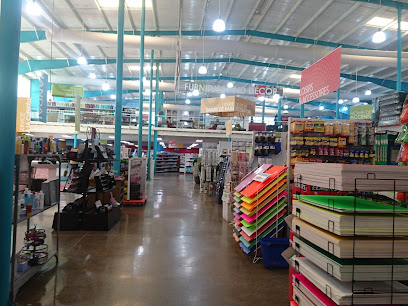
Richard's Store
Discover unique clothing and local products at Richard's Store in Port-au-Prince, a vibrant shopping destination reflecting Haitian culture.

Luminescence
Explore Luminescence in Petion-Ville for unique fashion accessories that celebrate Haitian artistry and craftsmanship.

Promenade (Espace Boutiques)
Experience the essence of Haitian culture at Promenade (Espace Boutiques), a vibrant shopping mall in Port-au-Prince filled with unique finds and local flavors.
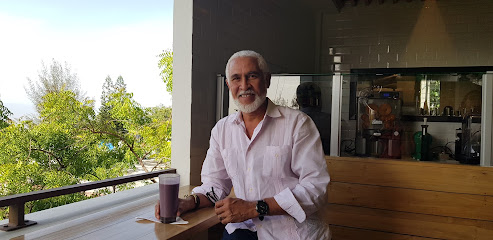
Creations Dorees
Discover Creations Dorees in Petion-Ville for unique gifts, handcrafted jewelry, stylish bags, and local artistry that celebrate Haitian culture.

Q&H Fashion
Explore vibrant local fashion at Q&H Fashion in Port-au-Prince, where style meets the rich culture of Haiti for an unforgettable shopping experience.

Comité Artisanat Haïtien
Explore handcrafted treasures at Comité Artisanat Haïtien, showcasing the vibrant artistry and unique culture of Haiti in every piece.
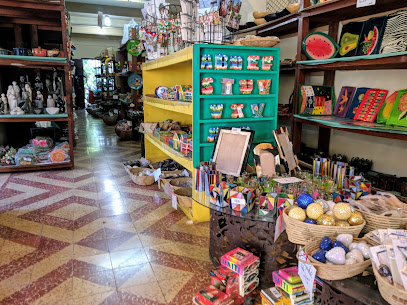
Essential bars & hidden hideouts
FUBAR
Discover the lively atmosphere and exceptional cocktails at FUBAR, a must-visit bar in Petion-Ville for an unforgettable night out.
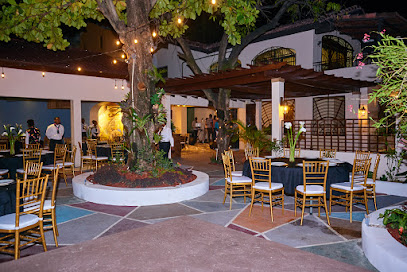
Asu Rooftop Lounge
Asu Rooftop Lounge: A Luxurious Retreat Offering Stunning Views and Craft Cocktails in Port-au-Prince.

House of Beer Haiti
Discover the heart of Port-au-Prince's nightlife at House of Beer Haiti, where vibrant atmosphere meets a diverse selection of drinks and delicious food.

Goose Bar
Goose Bar: Embrace the vibrant nightlife of Port-au-Prince with great drinks and a lively atmosphere.

Lakay bar Resto
Experience the vibrant flavors and atmosphere of Lakay Bar Resto in Port-au-Prince, where local cuisine meets lively entertainment.
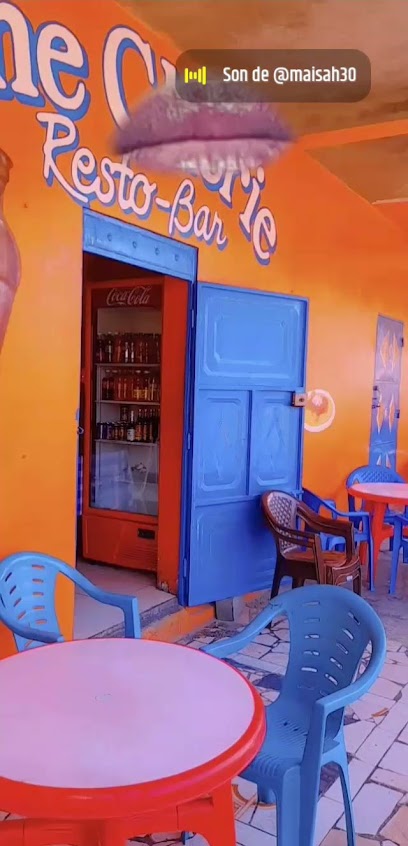
FLAME BAR
Experience the vibrant nightlife at Flame Bar in Port-au-Prince, where locals and tourists come together to enjoy drinks, music, and unforgettable moments.

Exotic Bar & Snack
Experience the vibrant flavors of Port-au-Prince at Exotic Bar & Snack, where delicious snacks and local drinks await in a lively atmosphere.
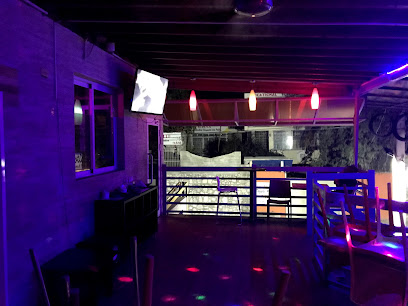
OBLAKA LOUNGE
Discover the vibrant atmosphere of Oblaka Lounge in Pétion-Ville, a perfect blend of bar, restaurant, and ice cream shop for an unforgettable dining experience.
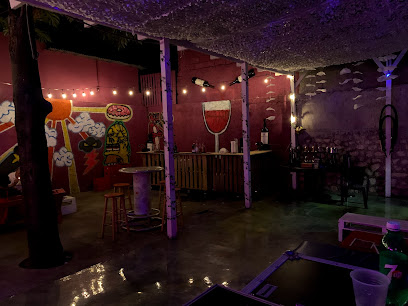
Frenshe's bar
Discover the vibrant spirit of Port-au-Prince at Frenshe's Bar, where local charm meets unforgettable nightlife in a welcoming atmosphere.

Amistad Resto Bar
Experience the vibrant flavors of Haiti at Amistad Resto Bar, where local cuisine meets lively ambiance in the heart of Port-au-Prince.

NAN FOLMAN SPORT BAR
Experience the lively atmosphere and local flavors at Nan Folman Sport Bar, a gem in the heart of Port-au-Prince's nightlife.

Jaymika bar
Discover the vibrant nightlife of Port-au-Prince at Jaymika Bar, where lively music, delicious drinks, and a welcoming atmosphere await.

Bar Réstaurant dansant
Discover the vibrant nightlife at Bar Réstaurant dansant, where delicious cuisine and lively music create an unforgettable experience in Port-au-Prince.

Miracles Bar
Experience the vibrant nightlife of Port-au-Prince at Miracles Bar, a cozy spot serving authentic Haitian drinks in a lively atmosphere.

chez willy
Experience the vibrant atmosphere and local flavors at Chez Willy, a must-visit bar in Port-au-Prince for tourists seeking authentic Haitian culture.

Local Phrases
-
- HelloBonjou
[bon-zho] - GoodbyeOrevwa
[o-rev-wa] - YesWi
[wee] - NoNon
[non] - Please/You're welcomeTanpri
[tan-pree] - Thank youMèsi
[meh-see] - Excuse me/SorryEskize mwen
[es-kee-zay mwen] - How are you?Kijan ou ye?
[kee-jan oo yay] - Fine. And you?Byen. E ou menm?
[byen. ay oo mehn] - Do you speak English?Èske ou pale angle?
[es-keh oo pal ang-leh] - I don't understandMwen pa konprann
[mwen pa kon-pran]
- HelloBonjou
-
- I'd like to see the menu, pleaseMwen ta renmen wè meni an, tanpri
[mwen tah ren-men weh men-ee an, tan-pree] - I don't eat meatMwen pa manje vyann
[mwen pa manj vyan] - Cheers!Sante!
[san-tay] - I would like to pay, pleaseMwen ta renmen peye, tanpri
[mwen tah ren-men pay-yeh, tan-pree]
- I'd like to see the menu, pleaseMwen ta renmen wè meni an, tanpri
-
- Help!Ed! / Sove mwen!
[ed / sovay mwen] - Go away!Ale deyo!
[ah-lay deh-yo] - Call the Police!Rele Polis!
[reh-lay po-leece] - Call a doctor!Rele yon doktè!
[reh-lay yon dok-teh] - I'm lostMwen pedi
[mwen peh-dee] - I'm illMwen malad
[mwen ma-lad]
- Help!Ed! / Sove mwen!
-
- I'd like to buy...Mwen ta renmen achte...
[mwen tah ren-men ashteh] - I'm just lookingMwen jis ap gade
[mwen zhees ap gad] - How much is it?Konbyen li ye?
[kon-byen lee yay] - That's too expensiveSa twò chè
[sa twa sheh] - Can you lower the price?Eske ou ka ba pri la?
[es-keh oo ka bah pree lah]
- I'd like to buy...Mwen ta renmen achte...
-
- What time is it?Kilè li ye?
[kee-leh lee yay] - It's one o'clockLi senk
[lee sank] - Half past (10)Demi (10)
[deh-mee (dis)] - MorningMaten
[mah-ten] - AfternoonApremidi
[ap-re-mee-dee] - EveningAswè
[ah-sweh] - YesterdayYe
[yay] - TodayJodi a
[zho-dee ah] - TomorrowDemen
[deh-men] - 11
[1] - 22
[2] - 33
[3] - 44
[4] - 55
[5] - 66
[6] - 77
[7] - 88
[8] - 99
[9] - 1010
[10]
- What time is it?Kilè li ye?
-
- Where's a/the...?Ki kote...?
[kee ko-teh] - What's the address?Kisa adres la?
[kee-sah ad-res lah] - Can you show me (on the map)?Eske ou ka montre m ' (sou kat la)?
[es-keh oo ka mohn-tray m (soo kaht lah)] - When's the next (bus)?Ki lè pwochen an?
[kee leh pwo-shen an] - A ticket (to ....)Yon tikè (pou ....)
[yon tee-keh (poo)]
- Where's a/the...?Ki kote...?
History of Port-au-Prince
-
Port-au-Prince, the capital of Haiti, was founded in 1749 by the French colonial authorities. Its strategic location on the Gulf of Gonâve made it a vital port for trade and military operations. The city was initially designed with a grid pattern, a common feature in French colonial urban planning, which facilitated its growth as a bustling port city.
-
Port-au-Prince played a significant role during the Haitian Revolution (1791-1804). The city was a key battleground in the struggle for independence from French colonial rule. In 1804, Haiti became the first independent black republic in the world and the first country in the Western Hemisphere to abolish slavery. Port-au-Prince was declared the capital of the new nation, symbolizing its newfound freedom and resilience.
-
On May 7, 1842, a devastating earthquake struck Port-au-Prince, causing extensive damage to the city's infrastructure. Many buildings were destroyed, and the event highlighted the vulnerability of the city to natural disasters. The earthquake led to significant rebuilding efforts and changes in architectural practices to better withstand future seismic events.
-
From 1915 to 1934, Port-au-Prince was under United States occupation. The occupation was initially justified by the need to stabilize the country and protect American interests. During this period, significant infrastructure improvements were made, including the construction of roads, bridges, and public buildings. However, the occupation also faced strong resistance from the Haitian population, leading to periods of unrest and conflict.
-
The Duvalier era, marked by the presidencies of François 'Papa Doc' Duvalier (1957-1971) and his son Jean-Claude 'Baby Doc' Duvalier (1971-1986), was a period of authoritarian rule in Haiti. Port-au-Prince served as the center of their power. The regime was characterized by political repression, human rights abuses, and the use of the Tonton Macoute militia to maintain control. Despite the oppressive atmosphere, the city continued to grow, with notable expansions in education and healthcare infrastructure.
-
On January 12, 2010, a catastrophic earthquake struck Port-au-Prince, causing widespread devastation. The quake, which registered a magnitude of 7.0, resulted in the deaths of an estimated 230,000 people and left over a million homeless. The disaster had a profound impact on the city, leading to an outpouring of international aid and a long-term rebuilding process. Efforts to reconstruct the city have focused on improving infrastructure and resilience to future natural disasters.
-
Port-au-Prince is a hub of Haitian culture, known for its vibrant arts scene. The Iron Market (Marché en Fer) is a notable landmark where local artisans sell crafts, paintings, and traditional Vodou paraphernalia. The city is also home to the National Museum of Haiti (Musée du Panthéon National Haïtien), which preserves the country's rich history, and the annual Carnival, a major event showcasing music, dance, and elaborate costumes. These cultural activities highlight the resilience and creativity of the Haitian people.
Port-au-Prince Essentials
-
Port-au-Prince is served by Toussaint Louverture International Airport (PAP), which is located about 10 kilometers north of the city center. Major airlines offer direct flights from various North American and Caribbean destinations. From the airport, you can take a taxi or arrange a hotel shuttle to reach your accommodation. It's advisable to use official airport taxis for safety and reliability.
-
Within Port-au-Prince, public transportation options include 'tap-taps' (colorful shared taxis) and buses. Tap-taps are a popular and inexpensive way to get around, but be cautious about personal safety and pickpocketing. For more comfort and safety, consider using private taxis or rideshare services. Car rentals are available, but driving can be challenging due to traffic congestion and road conditions.
-
The official currency in Haiti is the Haitian Gourde (HTG). U.S. dollars are also widely accepted, especially in tourist areas. Credit cards are accepted in many hotels, restaurants, and shops, but it is advisable to carry cash for smaller establishments and markets. ATMs are available but may not always be reliable, so consider carrying sufficient cash.
-
While Port-au-Prince offers a rich cultural experience, it's important to be aware of safety concerns. Some neighborhoods, such as Cité Soleil and Martissant, have high crime rates and should be avoided. Stick to well-known areas like Pétion-Ville and always use reputable transportation. Avoid walking alone at night, keep your belongings secure, and stay vigilant in crowded places.
-
In case of emergency, dial 114 for police assistance or 116 for medical emergencies. The main hospitals in Port-au-Prince include Hôpital de l'Université d'Etat d'Haïti and Hôpital Bernard Mevs. It's advisable to have travel insurance that covers medical emergencies. For minor health issues, pharmacies are widely available throughout the city.
-
Fashion: Do dress modestly and comfortably. Avoid wearing flashy jewelry or expensive accessories. Religion: Do respect local customs and traditions. When visiting religious sites, dress conservatively and behave respectfully. Public Transport: Do use tap-taps cautiously and be aware of your surroundings. Don't display valuables openly. Greetings: Do greet people with a friendly 'Bonjour' or 'Bonsoir.' A handshake is common, but a kiss on the cheek is also a customary greeting among friends. Eating & Drinking: Do try local dishes like griot (fried pork) and akasan (a corn drink). Don't drink tap water; always opt for bottled water.
-
To experience Port-au-Prince like a local, visit the Iron Market (Marché en Fer) for a variety of local goods and handicrafts. Explore the vibrant art scene by visiting the numerous art galleries and studios in Pétion-Ville. Engage with locals who are often friendly and eager to share stories about their culture and history. Don’t miss the opportunity to attend a live music performance, especially traditional Haitian compas music.
Trending Landmark in Port-au-Prince
-
Champ de Mars
-
Portofino
-
Place Saint-Pierre
-
L'Observatoire de Boutillier
-
The National Pantheon Museum
-
Coin des Artistes - Vivano
-
Palais Des Friandises
-
FOKAL Fondasyon Konesans ak Libète
-
Fort Jacques et Fort Alexandre
-
Tabarre's Palace
-
Habitation Hatt Hôtel
-
National Palace
-
Parish of Our Lady of Perpetual Help
-
Circuit 9 Haiti
-
Station Gonaives
Nearby Cities to Port-au-Prince
-
Things To Do in Petionville
-
Things To Do in Jacmel
-
Things To Do in Hinche
-
Things To Do in Saint-Marc
-
Things To Do in Gonaïves
-
Things To Do in Cap-Haïtien
-
Things To Do in Les Cayes
-
Things To Do in Jarabacoa
-
Things To Do in Jérémie
-
Things To Do in Puerto Plata
-
Things To Do in Santo Domingo
-
Things To Do in Samana
-
Things To Do in Salt Cay
-
Things To Do in South Caicos
-
Things To Do in Cockburn Town
















